Understanding the unique needs of a child with Autism Spectrum Disorder (ASD) involves recognising that they experience the world differently. Lots of children with autism will struggle to process everyday sensory information and their responses to sounds, textures and smells can be very different to other children.
Sometimes, children with autism can be over-sensitive or under-sensitive to different sensory stimuli and this can have a big impact on their day-to-day life. Whether children are hypersensitive or hyposensitive, sensory activities can be beneficial and they should be incorporated into a structured therapy plan from a young age.
Sensory activities don’t have to be complex and there are lots of ways parents and caregivers can stimulate their child’s senses in a controlled way, helping with sensory issues. Below we have created a list of simple, yet effective sensory activities to try that can be tailored to meet the needs of different children with autism.
The Importance of Sensory Activities
Autism Spectrum Disorder often comes with a unique set of sensory sensitivities that can result in sensory avoidance or sensory seeking. Sensory activities are designed to stimulate all five senses; touch, sight, hearing, smell and taste. Different activities can engage different senses and meet the unique needs of different children with autism.
Overall, these activities are designed to help children feel more comfortable in their surroundings and they offer several benefits, such as;
- Cognitive Development
Sensory play stimulates the brain, fostering the development of cognitive functions and several important skills. While playing, more neural pathways are created, which can also improve the processing of sensory information.
- Motor Skills
These types of activities often require movements that can help to strengthen children’s muscles and improve both their fine and gross motor skills. Lots of sensory activities also improve hand-eye coordination.
- Social Interaction
Sensory activities can encourage social interaction, supporting the development of speech and language skills as well as teaching children how to share, wait their turn and follow instructions.
- Emotional Development
As children become more comfortable with sensory stimuli, they may experience less anxiety and stress, contributing to better emotional health. Sensory activities can also be used to calm children with autism down and promote relaxation when they’re feeling overwhelmed.
Popular Sensory Activities for Children With Autism
There is a vast range of activities that can stimulate the five senses. Each of these activities can be tailored to meet the individual sensory needs of children with developmental conditions and is a valuable addition to a well-rounded learning experience. They offer different avenues for children to explore their senses while also providing educational and developmental benefits.
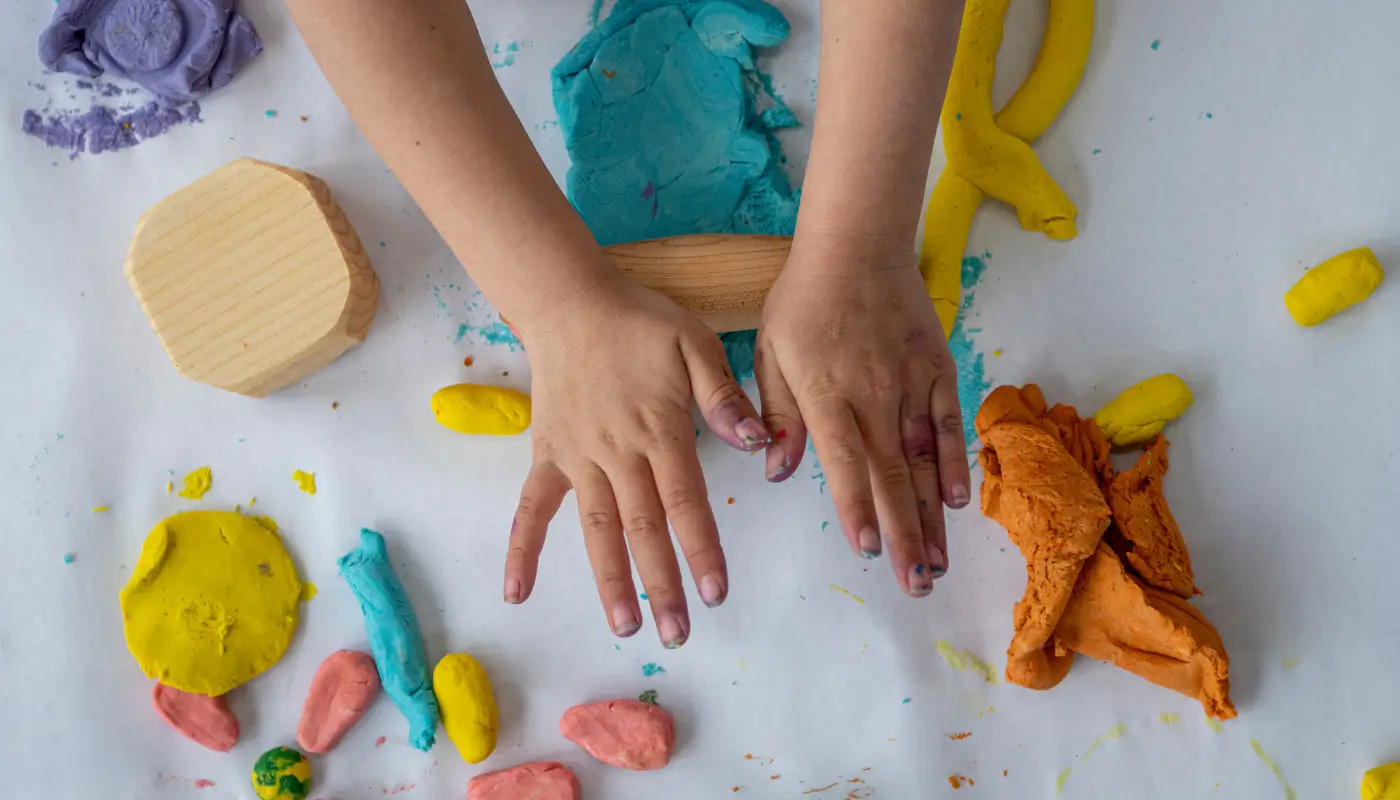
Play Dough
The malleable nature of play dough makes it an ideal tool for tactile sensory play. Kneading, rolling and moulding the dough can be an excellent exercise for hand and finger muscles, contributing to the development of fine motor skills. Not to mention, the repetitive actions involved in playing with play dough can offer a soothing experience.
You can enhance this sensory activity by using dough with different colours or textures, enabling multi-sensory exploration that also engages the child’s visual senses. You can even add natural scents to play dough, from lavender to mint, to incorporate olfactory stimuli as well. Overall, play dough offers a versatile and enriching sensory experience.
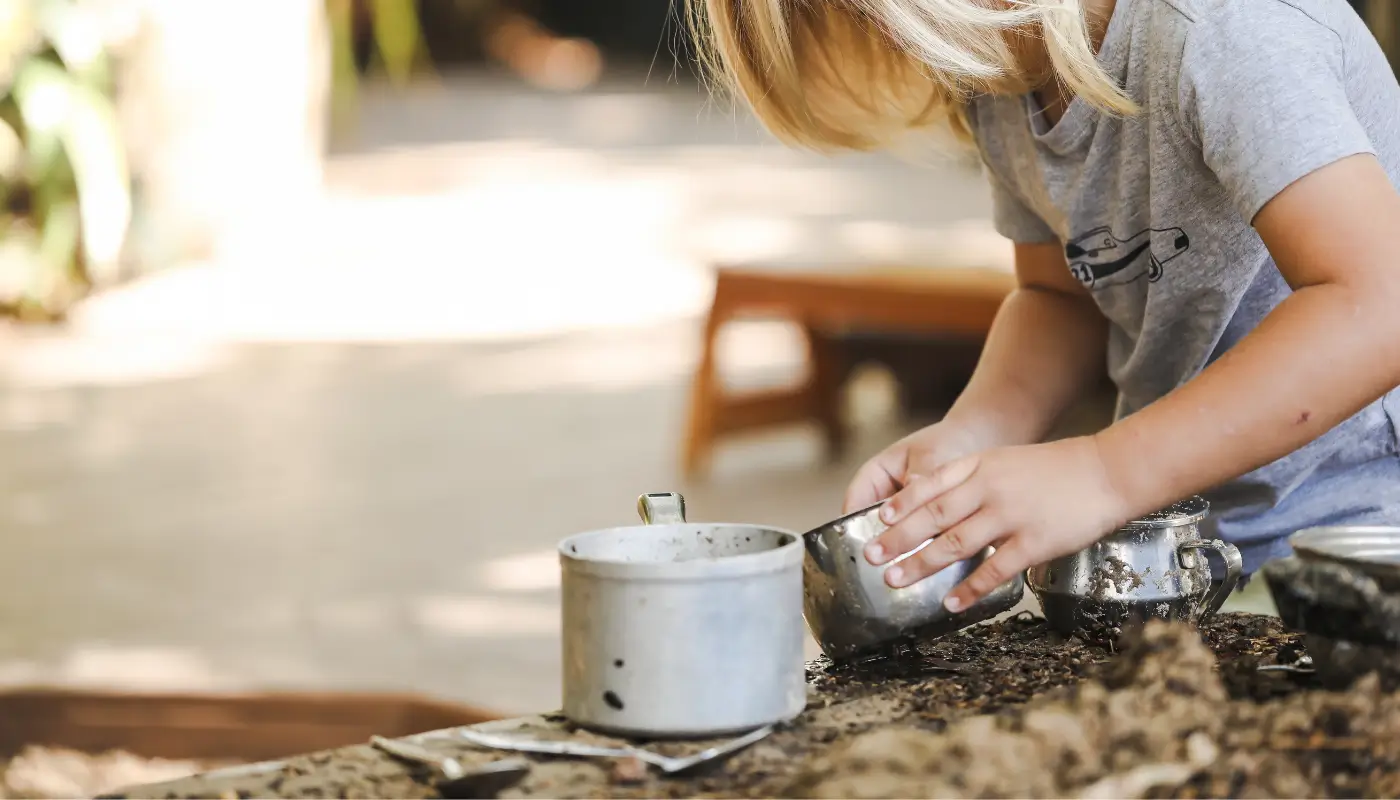
Mud Kitchen
A mud kitchen is an outdoor sensory play area designed to let children explore natural materials like mud, water, sticks and leaves. This straightforward tactile activity allows them to engage in imaginative play while getting their hands dirty, fostering both creativity and fine motor skills. The act of scooping, pouring and stirring whilst playing also enhances hand-eye coordination.
Using different utensils like pots, pans and spoons adds layers of texture and complexity, which can stimulate a child’s cognitive development as they learn to differentiate between various tools and their functions. Additionally, the mud kitchen can serve as a social playground where children can practise communication skills. This makes the mud kitchen as educational as it is enjoyable.
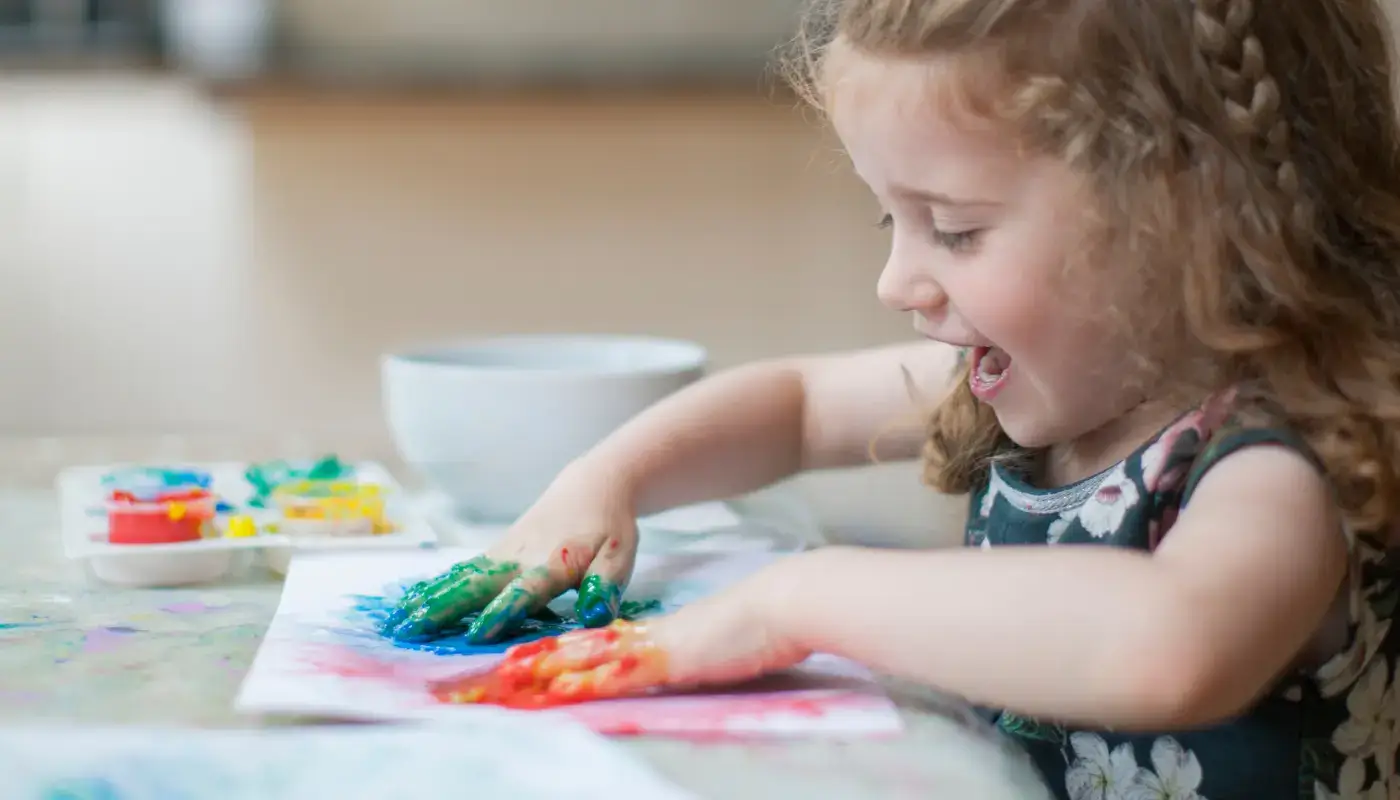
Finger Painting
Finger painting is a fantastic way to expose children to different textures. It’s a tactile and visual activity that encourages creativity and expression. Make sure to use non-toxic, hypoallergenic paints to ensure safety. You could even make your own edible paints using natural ingredients for smaller children who are prone to putting their fingers in their mouths.
You can expand this sensory experience to include foot painting, adding a layer of stimulation. Like finger-focused painting, foot painting also helps develop gross motor skills and body awareness. Both forms of painting offer a rich, multi-faceted experience that can be customised to meet a child’s individual sensory needs.
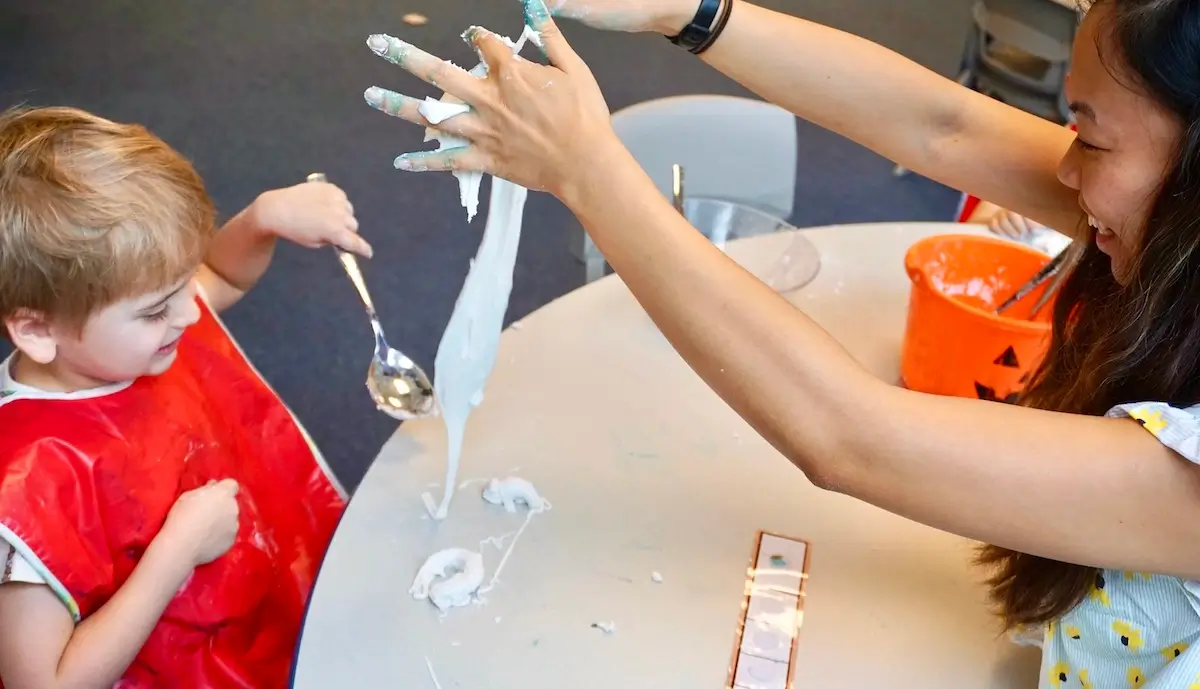
Cornflour Slime
Cornflour slime, often made by mixing cornflour and water, provides a unique experience that can both intrigue and entertain children with autism. When touched gently, it feels like a liquid, but when force is applied, it is more like a solid. This fascinating substance is excellent for sensory play, providing tactile stimulation and fostering a sense of curiosity.
The changing consistency of cornflour slime offers a surprise element, encouraging children to explore and experiment further. By adding food colouring, glitter or small objects into the slime mixture, you can elevate the sensory and educational value of this activity, making it a versatile play activity that can be tailored to individual learning and sensory needs.
Instrument Play
Instruments like drums, bells and shakers are great for auditory stimulation. Playing with these musical instruments allows children to explore different pitches and volumes while also practising their motor skills. This kind of tactile engagement complements the auditory stimulation, improving hand-eye coordination and rhythm awareness.
You could even create your own simple musical instruments to add another layer to this sensory activity. Crafting instruments from household items, like a shaker from a sealed container filled with rice or beans, can turn the process into an educational experience. This can engage a child’s creativity and support the development of problem-solving skills. Instrument play, whether with store-bought or homemade instruments, offers a multi-sensory experience.
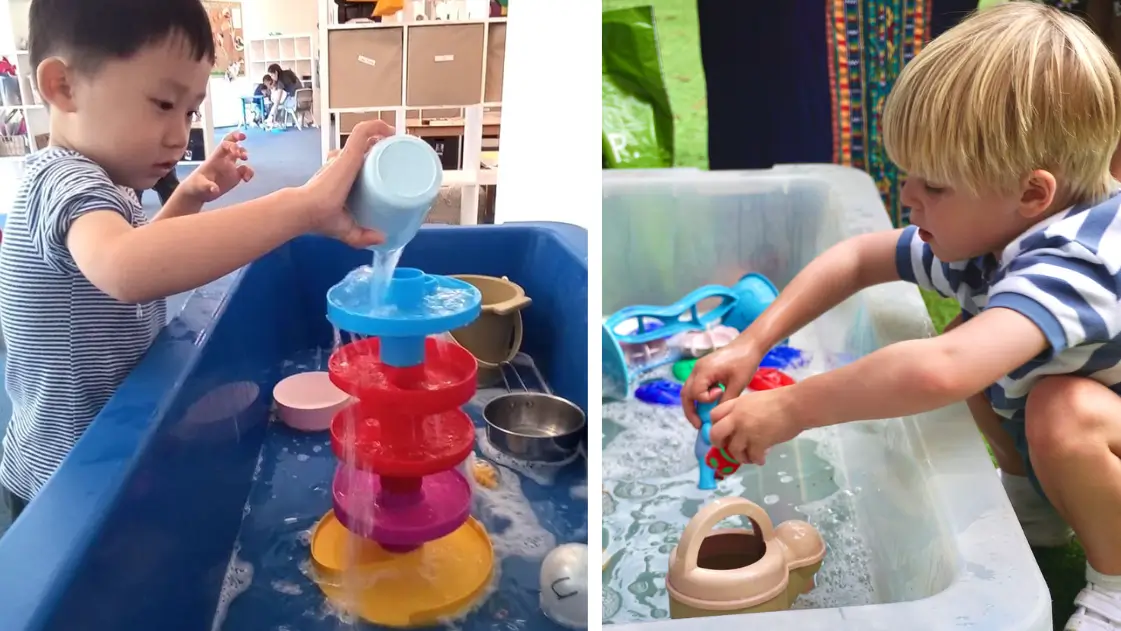
Pouring Station
A pouring station, usually made of various-sized cups and bowls filled with water, provides an engaging sensory activity for children with autism. It can be a great way to practise both gross and fine motor skills as they work on gripping, lifting and pouring.
Additionally, adding food colouring to the water or using different textured liquids like oil can make the activity visually stimulating and introduce another layer of sensory engagement. A pouring station offers a learning experience that is both educational and fun.
Edible Sensory Table
An edible sensory table takes away the worry of children with autism putting things in their mouths during playtime. It’s typically filled with safe-to-eat items like cooked pasta, jelly or cereal, which allows for a no-stress, explorative environment. This enables children to investigate different textures, shapes and even tastes without any safety concerns.
Putting several food items on a table is an excellent way to engage multiple senses at the same time, making it a rich sensory experience. Adding different temperatures to the mix, such as cold fruits or warm mashed potatoes, can introduce yet another layer of stimulation. An edible sensory table offers a worry-free way for children with autism to engage in sensory play, reducing parental anxiety and fostering a more relaxed playtime.
Plastic Bag Kites
Creating kites from lightweight plastic bags, strings and sticks is not just an arts and crafts activity but also a sensory one. The initial process of assembling the kite allows for fine motor skill development and hand-eye coordination. Beyond this, decorating the kite also provides a chance for creative expression.
This type of activity is an excellent way for children with autism to connect with the outdoors too. Not to mention, flying a kite often involves problem-solving, as children figure out the best ways to catch the wind whilst running, making it cognitively enriching as well. Overall, this activity combines sensory stimulation, cognitive development and physical exercise, making it a well-rounded experience.
Visit an Autism Centre in London
First Bridge Centre is here to help improve the lives of children on the autism spectrum and with developmental delays. Using Applied Behaviour Analysis (ABA) principles, we have designed a variety of programmes for children and their families. Our experienced team can support the early development of children aged one to nine and nurture their love for learning whilst helping them meet important developmental milestones.
To book a free show around our ABA learning centre with our expert team or to find out more about our support services, don’t hesitate to get in touch with us today. Call us on +44 (0) 20 3301 3985, we’re here to help.
